2020 Toyota C-HR Review: Easy to Like, Hard to Love

Think back to early 2017. Toyota’s core models included the super-dull Corolla—it’s much better now—and the nondescript RAV4 (ditto). Along came the Compact High Rider, with funky, concept car-like styling and city-friendly dimensions. It also came in a rad turquoise color, with a white roof, which tugged at the heartstrings of this child of the ’90s in the same way Pogs and Reboot would. It looked fun, which wasn’t just something in short supply at Toyota at the time, but also across the sub-compact car and crossover spectrum.
Here in 2020, Toyota has treated the C-HR to a subtle update. Those unique looks remain, with the Japanese brand bolstering the little hatchback’s appeal via more tech and a deeper lineup of standard safety kit. If you’re down with the looks like I am, the C-HR offers a stylish, reasonably affordable urban cruiser package—but with a few compromises that fly in the face of the whole “crossover” image.
Strong first impressions
The C-HR puts its best foot forward the first time you open the door. A puddle light beams its badge at your feet, a small but welcome premium nod. Clambering in, there’s more space up front than the Toyota’s compact, 172.6-inch footprint (4,352 mm) would suggest. The driver’s seat is soft yet well-bolstered, and while the cushion looks flat, it proves comfortable on long hauls. I put on 350 miles in a single day with the C-HR—to test the new 2021 RAV4 Prime—and never felt fatigued or numb. Toyota uses the same basic platform under both models, plus vehicles like the Corolla and Camry, so if it’s easy to get comfortable in one, it’s easy in them all.
SEE ALSO: 2021 Toyota RAV4 Prime First Drive Review: Plug-In PowerFront-seat storage space, be it in the door pockets or the center console, is pretty average. Toyota’s decision to put the cupholders both ahead and behind the drive selector is a good one: it keeps the center console narrow, expanding elbow room.
An 8.0-inch infotainment screen runs Toyota’s Entune infotainment system. It’s the digital equivalent of those older Corollas: hardly visually impressive, but dependable. 2020 finally sees Android Auto compatibility join Apple CarPlay, so you can stick to your preferred mobile device setup easily.
Slow and steady
FAST FACTS
| Engine: | 2.0L I4 |
| Output: | 144 hp, 139 lb-ft |
| Transmission: | CVT, FWD |
| US fuel economy (MPG): | 27/31/29 |
| CAN fuel economy (L/100KM): | 8.7/7.5/8.2 |
| Starting Price (USD): | $22,470 (inc. dest.) |
| As-Tested Price (USD): | $28,490 (inc. dest.) |
| Starting Price (CAD): | $25,465 (inc. dest.) |
| As-Tested Price (CAD): | $31,155 (inc. dest.) |
On paper, the C-HR features perfectly respectable performance numbers. Even in my local area, right in the core of a big metropolis, it initially felt acceptable. The CVT transmission lacks the physical first gear of the newer Corolla, so there’s still some of that elastic feeling to acceleration, but I find Toyota’s version one of the smoother CVTs out there. It will drone away from a stop light, but a quick adjustment of your foot sees it drop away quickly.
It’s when the C-HR is presented with a highway on-ramp that it begins to disappoint. While it’s around as long and as wide as a Corolla hatchback, the C-HR is a dense little thing. It packs an additional 240 lb (109 kg) over its sibling, blunting performance beyond inner-city speeds. Passing on the highway requires chess-like planning. What’s worse, the CVT needs to work hard to maintain typical cruising speed, so the C-HR posts a mediocre 29 mpg combined average (8.2 L/100 km). The larger RAV4 out-points it on the highway as well as in the city—and it actually comes with all-wheel drive. The C-HR offers an all-paw system in other parts of the world, but like a few other tiny crossovers—the Nissan Kicks and Hyundai Venue—it’s front-drive only here in North America.
SEE ALSO: 2020 Hyundai Venue ReviewThe TNGA platform provides a solid base for the C-HR’s dynamic range, however. The steering is very light, but it responds quickly to direction changes. It also rides commendably well for something so small, with soft damping that doesn’t devolve into bucking and wiggling over harsher tarmac. The engine might not love the highway, but the suspension does. Set the adaptive cruise control, and the C-HR will happily gobble up long distances.
Practically impractical
As more and more of my friends have told me, one of the main selling points of crossovers is their supposed practicality. That’s what makes the C-HR such an odd duckling in this segment though: it’s far more of a high-riding hatchback than a quote-unquote SUV, and one that sacrifices even more practicality for the sake of style. We said as much earlier this month when it faced off against the Mazda CX-3 and new Kia Seltos.
SEE ALSO: 2021 Kia Seltos vs 2020 Mazda CX-3 vs 2020 Toyota C-HR ComparisonStorage space behind the rear seats is 19.1 cubic feet (540 liters). That’s roughly equal to the Hyundai Kona, which is eight inches shorter. Dropping the seats doesn’t quite double the space (37.0 cubes), giving the C-HR one of the smallest load-lugging volumes in the class.
The rear doors feature a clever hidden handle within the C-pillar. That’s cool, though it does confuse newcomers. Unfortunately, those rear doors also hide an awkwardly-shaped portal, which makes ingress and egress hard for adults. You’ll need to duck to get in, and once installed in the back, headroom can be tight. The stylish high window-line doesn’t help project a sense of spaciousness either. This is a two-person car, is what I’m saying: those that need to put more than a toddler or a dog in the back may want to look elsewhere.
One other thing I need to bring up—again—is the lack of all-wheel drive. I’ll do my journalistic duty here and remind you that a good set of snow tires is more important than all-wheel drive, but regardless, marketing works. For some, the lack of available all-wheel drive will disqualify the C-HR from consideration alone.
Safety first
Toyota counters that lack of all-paw grip with a strong suite of standard safety features for the C-HR. Every trim arrives with automated emergency braking (with pedestrian detection), automatic high beams, lane-keep assist, and full speed-range adaptive cruise control. No less than 10 airbags come standard, as does a hill-start assist. The XLE Premium and this Limited trim also bundle in blind-spot monitoring plus rear cross-traffic alert.
Toyota’s adaptive cruise control remains a solid, if conservative, system. It leaves larger gaps between cars ahead than I’d expect, but on the other hand, that’s preferable to automated tailgating. The lane-keep assist won’t shout at you if you do ride up towards a line, only gently nudge you back towards the middle.
Verdict: 2020 Toyota C-HR Review
Ignore where Toyota places the C-HR on its website: this is far more of a car than an SUV. It’s not going to tow anything, nor does it come with all-wheel drive. The C-HR was meant to be a part of the value-oriented Scion brand before Toyota shuttered it, and as a style-conscious urban cruiser, it would’ve fit right in.
That said, in top-shelf Limited trim, the C-HR becomes a little too rich for our tastes. As tested it runs up to $28,490, or $31,155 in Canada (both including destination). The leather interior is quality, but we’d skip it and aim for the more affordable XLE model. It shaves a few thousand off the price, yet keeps the same safety and tech lineup.
Even at the more affordable price, however, the C-HR has limited appeal. It’s too compromised to be a versatile crossover, sacrificing the space and practicality many buyers in this segment don’t just want, but need. Its disappointing performance and fuel economy means it doesn’t even reap the benefits of its front-drive nature. So long as you never have to fit actual people in the back, it’s an appealing city runabout, but those looking for some utility will want to look elsewhere.
Become an AutoGuide insider. Get the latest from the automotive world first by subscribing to our newsletter here.
LOVE IT
- Unique looks
- Interior feels solid
- Comfortable city ride
LEAVE IT
- Unique looks
- No AWD
- Lethargic drivetrain

Kyle began his automotive obsession before he even started school, courtesy of a remote control Porsche and various LEGO sets. He later studied advertising and graphic design at Humber College, which led him to writing about cars (both real and digital). He is now a proud member of the Automobile Journalists Association of Canada (AJAC), where he was the Journalist of the Year runner-up for 2021.
More by Kyle Patrick



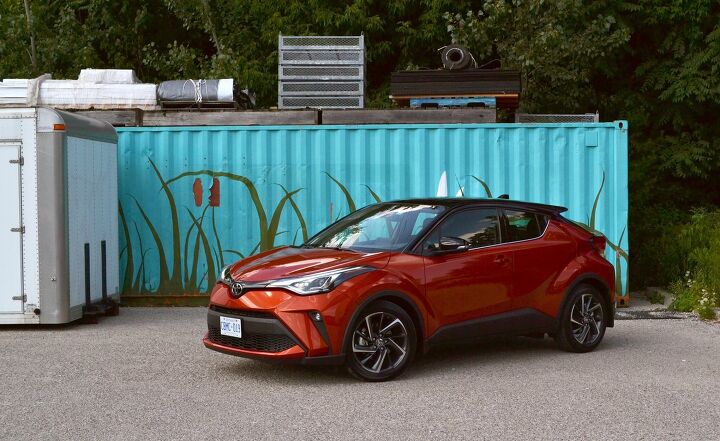
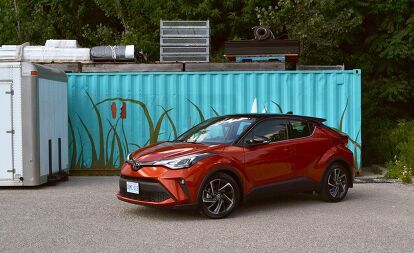








































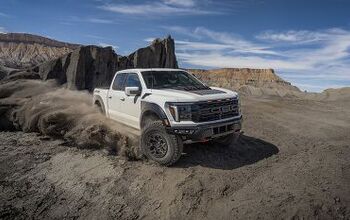

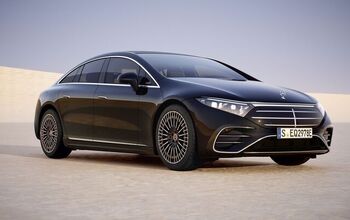
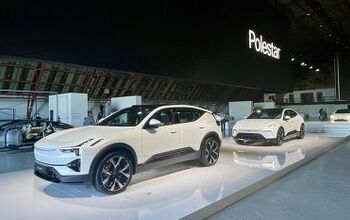
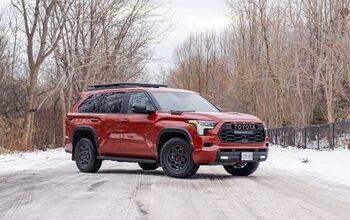

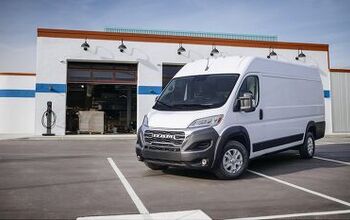
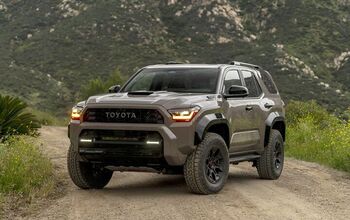
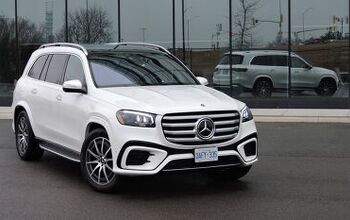
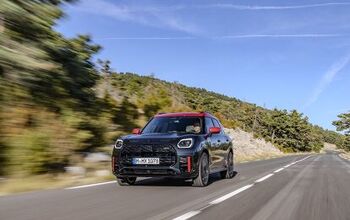
Comments
Join the conversation
I like my 2020 CHR, I dont see it as underperforming at all. Im disabled, and it was getting harder to get in lower to the ground cars, like Corolla, and Honda Civic, the last 2 cars I owned. Im 60 and hope to keep this for life. That is if the Government doesnt make everybody buy an electric car. Visibility is much better, and is like a small truck. I had a couple of Silverados, a 2004 which I totaled, and 2016 Z-71. The 2004 and 2009 Honda Civic were going to be last vehicles that I had to buy. I bought them new, and both were paid for.